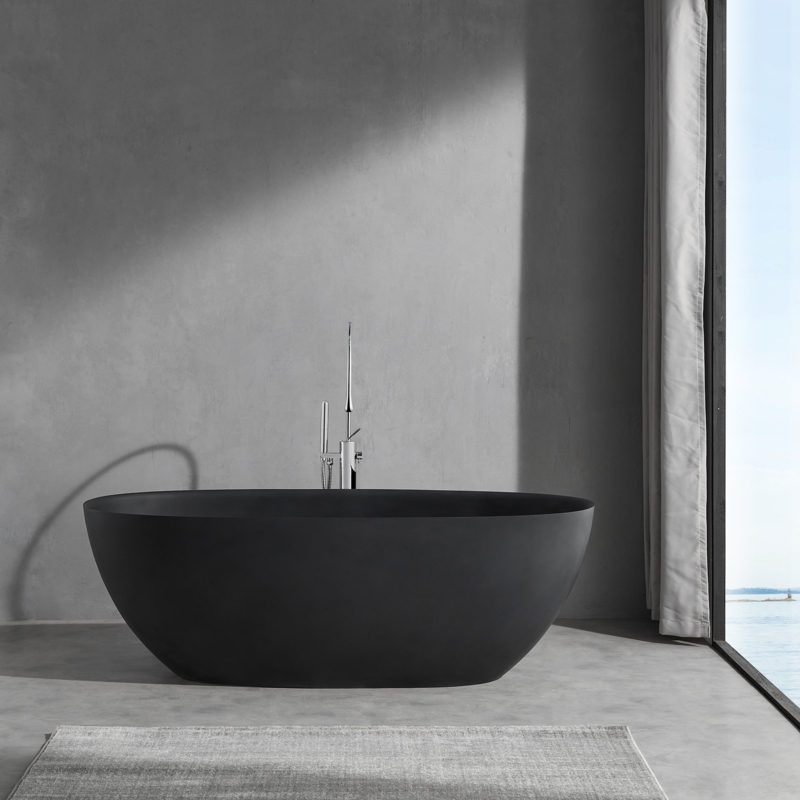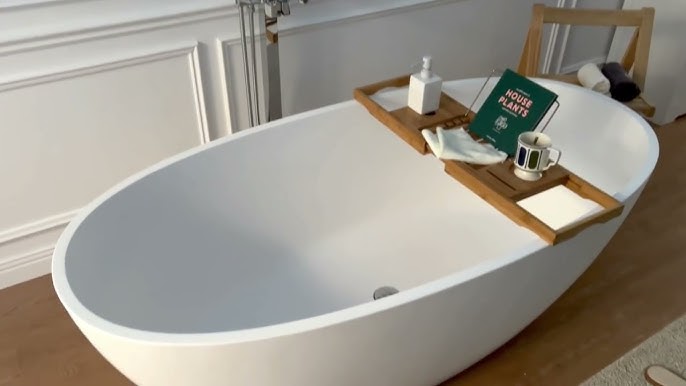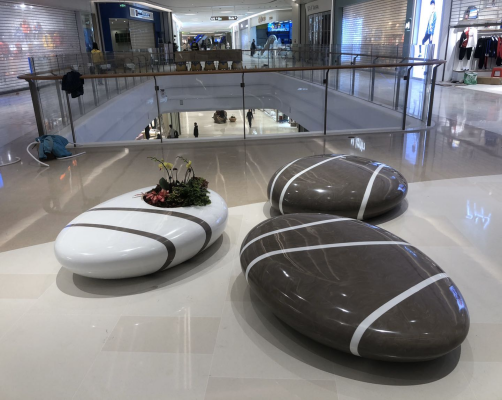When it comes to choosing the perfect bathtub for your bathroom, one material that has been gaining popularity is the acrylic solid surface bathtub. This modern option combines aesthetics, durability, and comfort, making it a top choice for many homeowners. However, like any product, it comes with both advantages and disadvantages. In this article, we will explore the pros and cons of acrylic solid surface bathtubs to help you make an informed decision.
What Is an Acrylic Solid Surface Bathtub?
An acrylic solid surface bathtub is made from a blend of acrylic resin and mineral compounds, creating a solid, non-porous surface. This construction offers a smooth and luxurious feel, perfect for creating a relaxing bathing experience. These bathtubs are often designed to mimic the appearance of natural stone or porcelain, while being lighter and more affordable.

Pros of Acrylic Solid Surface Bathtubs
1.Durability and Longevity One of the biggest advantages of acrylic solid surface bathtubs is their durability. They are resistant to cracking, chipping, and fading, making them a long-lasting choice. With proper care, these bathtubs can serve you for many years, maintaining their appearance and functionality.
2.Ease of Maintenance Acrylic bathtubs are incredibly easy to clean due to their smooth, non-porous surface. Unlike traditional porcelain tubs that can develop stains, acrylic solid surface bathtubs are resistant to mold, mildew, and soap scum buildup. Regular cleaning with a soft cloth and mild soap is all that's needed to keep them looking new.
3.Comfort Acrylic solid surface bathtubs are warmer to the touch compared to other materials, such as ceramic or porcelain. This makes them ideal for long, relaxing baths, as they retain heat well, helping to keep the water warm for longer periods.
4.Versatility in Design Acrylic bathtubs come in various shapes, sizes, and designs. Whether you prefer a freestanding tub or an alcove bathtub, the flexibility of acrylic solid surfaces allows manufacturers to create custom designs tailored to your specific needs and aesthetic preferences.
5.Affordable Option Compared to natural stone or high-end materials like cast iron, acrylic solid surface bathtubs are much more affordable. They provide a luxurious look and feel at a fraction of the cost, making them a great option for homeowners on a budget.
6.Lightweight Unlike traditional bathtubs made from materials like cast iron, acrylic solid surface bathtubs are significantly lighter. This makes them easier to transport and install, reducing labor costs and the risk of damage during installation.
Cons of Acrylic Solid Surface Bathtubs
1.Prone to Scratching While acrylic bathtubs are durable, they can be scratched more easily compared to other materials like cast iron or stone. Sharp objects, abrasive cleaning tools, or rough contact with hard surfaces can leave marks on the surface. However, light scratches can often be buffed out with a polishing compound.
2.Susceptible to Heat Damage While acrylic is good at retaining heat, it is not heat-resistant to the extent of materials like cast iron. Excessive heat from hot water or exposure to high-temperature objects (such as hair straighteners or hot curling irons) can cause damage or discoloration to the surface.
3.Not as Sturdy as Other Materials Although acrylic solid surface bathtubs are durable, they are not as solid or heavy-duty as materials like cast iron or stone. They can feel less sturdy under weight, which may be a concern for some users. Additionally, the lighter nature of acrylic can make it more prone to movement or shifting over time, particularly in larger tubs.
4.Limited Scratch Repair Options While minor scratches can often be buffed out, deep or significant scratches may require professional repair. In some cases, the repair process can be expensive and may require refinishing the entire bathtub.
5.Vulnerable to Chemical Damage Acrylic solid surface bathtubs can be vulnerable to chemical damage from harsh cleaning products. Using abrasive cleaners, bleach, or solvents can weaken the surface, leaving it susceptible to stains or discoloration. It’s essential to use non-abrasive, gentle cleaners specifically designed for acrylic surfaces to avoid this issue.
6.Potential for Yellowing Over Time Acrylic bathtubs are prone to yellowing over time, especially if exposed to harsh sunlight or improper cleaning. Regular maintenance and the use of appropriate cleaners can help mitigate this problem, but it’s still something to keep in mind.

Conclusion
An acrylic solid surface bathtub offers many benefits, such as durability, ease of maintenance, and affordability. They provide a luxurious and comfortable bathing experience, with a variety of design options available to suit different bathroom styles. However, like any material, they do have a few drawbacks, including susceptibility to scratching and potential heat damage.
Ultimately, whether an acrylic solid surface bathtub is the right choice for you depends on your specific needs and preferences. If you're looking for a versatile, cost-effective, and stylish bathtub that is easy to maintain, acrylic may be the perfect option. However, if you're concerned about scratching or long-term durability, it may be worth exploring other materials.
When shopping for your ideal bathtub, make sure to weigh the pros and cons of different materials and consider factors such as budget, maintenance requirements, and long-term use. This will help you make the best decision for your home and ensure that your new bathtub remains a beautiful and functional feature in your bathroom for years to come.
 Column
Column
 Leisure seat
Leisure seat
 Wall
Wall
 Reception
Reception